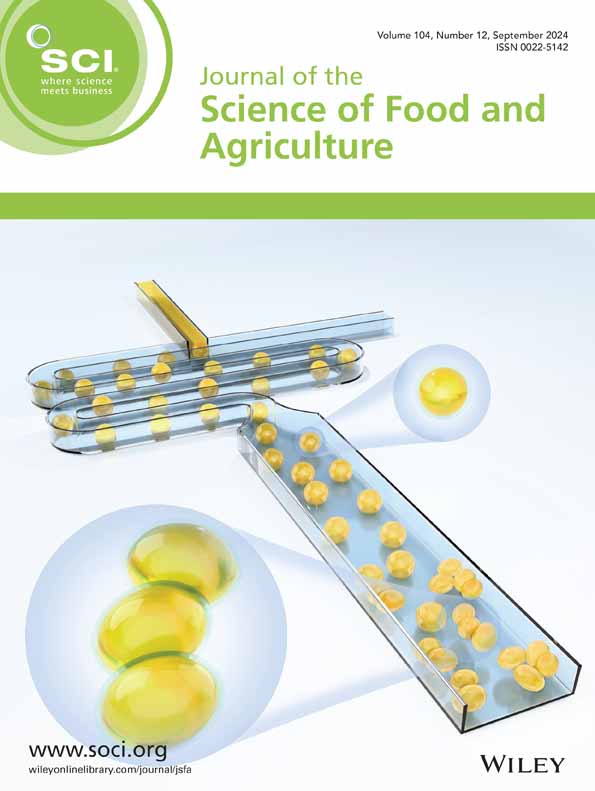Effect of physical treatments on the functional and structural features of soluble dietary fiber from soybean dregs
Abstract
BACKGROUND
In this research, the effects caused by ultrafine grinding (U), high-temperature cooking (HTC), microwave (M) and combined treatment (U-HTC, U-M) were evaluated on the functional properties and structural characteristics of soluble dietary fiber (SDF) obtained from soybean dregs.
RESULTS
Physical treatments could increase the extraction yield of SDF and improve the functional properties of SDF. The highest extraction yield (277.15 ± 5.87 g kg−1 based on the weight of soybean dregs) and purity (863.37 ± 5.15 g kg−1 based on the extract weight) of SDF was found in the sample by U-M treatment. U-HTC and U-M combined treatments significantly improved the water solubility and oil holding capacity of SDF. U-M treatment significantly increased the ability of SDF to adsorb cholesterol and perform cationic exchange; compared to the control, these abilities were increased by 138.46% and 10.38%, respectively. At pH 2.0, the nitrite ion adsorption capacity (NIAC) of SDF obtained by U-M combined treatment was 184.55 μg g−1, which was significantly higher by 32.10% compared with that of the control. The results obtained by X-ray diffraction and scanning electron microscopy showed that the structure of SDF generated from soybean dregs became coarser and more porous, and the crystallinity decreased after physical treatments.
CONCLUSION
Combined physical treatment is an effective way to improve the extracted yield and functional properties of SDF from soybean dregs. © 2023 Society of Chemical Industry.


 求助内容:
求助内容: 应助结果提醒方式:
应助结果提醒方式:


